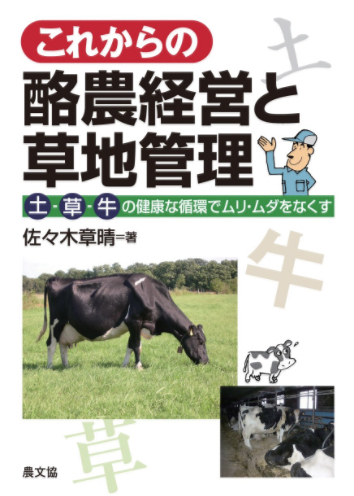Waste Not
I found an unexpected link between the two newest essays, which are on 酪 (1891: dairy product) and 獲 (1079: to catch game or fish; get). You might think the connection would involve the exploitation of animals for human purposes, but that's not at all the common ground. Instead, both essays include surprising uses of 無駄 (むだ: useless).
Essay 1079 contains this sentence:
獲得した優先権を無駄にしないために、電話を切らずにお待ちください。
Please hold so as not to lose your place in the queue.
獲得 (かくとく: acquisition); 優先権 (ゆうせんけん: priority); 電話を切らず (でんわをきらず: without hanging up the phone); 待つ (まつ: to wait); ください (please)
Working from Breen's definition of 無駄にしない (むだにしない), I thought it might mean "to make good use of; make the most of," though that didn't really fit the context. This 無駄にしない more accurately means "not to waste." To understand that, start with this verb:
無駄にする (to waste), which literally means "to make something useless"
Then negate it:
無駄にしない (not to waste) or literally "not to make something useless"
With essay 1891, I found 無駄 written as ムダ on the cover of the following book:

Working from typical definitions, I said that ムリ (無理) meant "impossible; excessive" and that ムダ (無駄) meant "pointless."
No, said my proofreader, explaining that muri and muda are terms from the "Toyota Production System."
What?! How did we go from dairy cows to car manufacturing?!
Well, we didn't exactly, but after Toyota gave these and 10 other terms special definitions related to production, some Japanese people adopted the lingo.
Here is Toyota's take on the two words I mentioned:
Muri (English: Overburden): Eliminating overburden of equipment and people is one of the main principles of the Just-In-Time system, the main pillar of the Toyota Production System. To avoid overburden, production is evenly distributed in the assembly processes.
Muda (English: Waste): In management terms it refers to a wide range of non-value-adding activities. Eliminating waste is one of the main principles of the Just-In-Time system.... Considered as waste are unnecessary financing costs, storage costs, and worthless stock of old items.
Toyota renders the 12 key terms in katakana, apparently to highlight that in the context of the Toyota Production System, the words have a special meaning. Even the romaji versions receive special treatment, all starting with capital letters.
Of course I'm curious about the kanji associated with the other terms in the list, so here goes:
Andon (English: 'Sign' or 'Signal'): The Toyota site says that this word originated from the term for "paper lantern," which must be 行灯 (あんどん: journey + lamp). Breen defines 行灯 as "fixed paper-enclosed lantern; paper-covered wooden stand housing an (oil) lamp."
Gemba (Genba) (English: The actual place, the place where the real work is done): This corresponds to 現場 (actual + place), a term that can also mean "factory floor."
Genchi Genbutsu (English: Go and see for yourself): The first word corresponds to 現地 (げんち: actual place), a near synonym for 現場. And the latter word is 現物 (げんぶつ: actual article or goods).
Hansei (English: Self-reflection): That corresponds to 反省 (はんせい: (1) reflection; reconsideration; introspection; (2) regret; repentance; remorse; being sorry).
Heijunka (English: Production smoothing): This has to be 平準化 (へいじゅんか: leveling; harmonization). The middle kanji is also in 準備 (じゅんび: preparation).
Jidoka (English: Autonomation — automation with human intelligence): The term 自動化 (じどうか) simply means "automation," but Toyota has something different in mind. I think "autonomation" must be a coinage that combines "autonomy" (as in, workers are allowed to think for themselves) with "automation."
Kaizen (English: Continuous improvement): Whereas 改善 (かいぜん: change + good) just means "improvement" in regular Japanese, it becomes "continuous improvement" in Toyota-speak. That sounds exhausting!
Kanban (English: Signboard): The word 看板 (かんばん) means "signboard," but it's so much more at Toyota.
Mura (English: Unevenness or irregularity): 斑. As essay 2098 on that kanji shows, the non-Joyo kun-yomi むら means "unevenness; inconsistency; erraticness; irregularity; blemish."
Nemawashi (English: Laying the groundwork or foundation; building consensus): The word 根回し (ねまわし) does indeed mean "(1) making necessary arrangements; laying the groundwork; (2) digging around the roots of a tree (before transplanting)." I've blogged about this term!
Poka-Yoke (English: Mistake-proofing): This word doesn't even sound like Japanese! But indeed Breen has an entry for ポカヨケ (fool-proofing; mistake-proofing; error-proofing; fail-safe). The word combines ポカ, a colloquial term for "(careless) mistake," with よけ (除け or 避け: protection; repellent).
By the way, the same page that explains all this about Toyota's thinking indicates that "tycoon" comes from Japanese! The original word is 大君 (たいくん: liege lord; shogunate). I had no idea!
I leave you with a sneak preview of essay 1079:
❖❖❖
Did you like this post? Express your love by supporting Joy o' Kanji on Patreon:



Comments